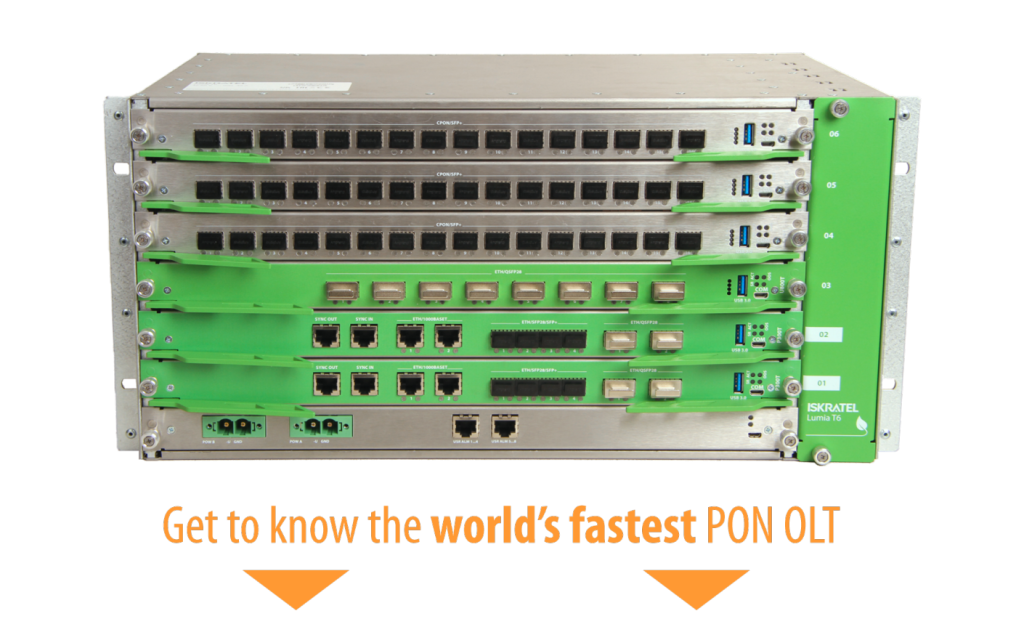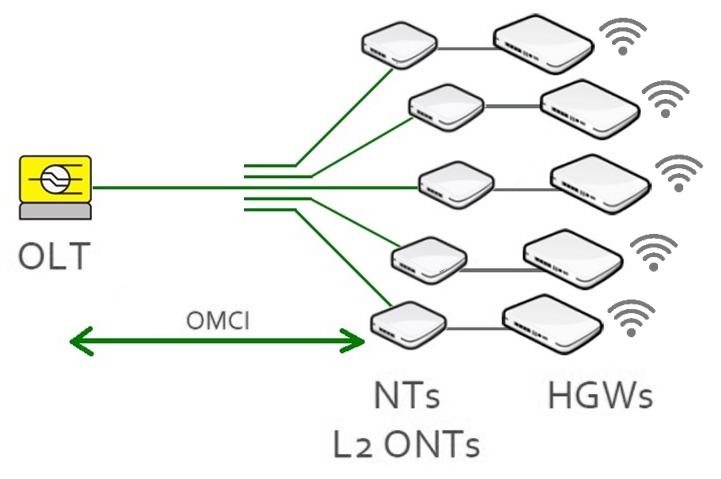(4-minute read / 650 words)
As an operator, can you imagine a situation when Optical Line Terminals (OLTs) and Optical Network Terminals (ONTs) purchased from various vendors simply refuse to work together? Such a situation is not uncommon whenever there is a switch-over to another equipment vendor to cut costs and meet sustainability goals. Or when adding another vendor to the network to minimise supply chain risks and vendor lock-in for instance. These situations increase demand for network-equipment interoperability.
|
Here at Slovenia’s Kontron, we take interoperability issues off the table. We fully support operators whether they are expanding their network, or just complying with new regulations.
|
What is the process of ensuring interoperability?
Full interoperability is ensured by rigorous testing of equipment, followed by a thorough analysis of results, which either confirms equipment interoperability or not. If interoperability is not possible by default, software adjustments need to be made and software patches issued. These steps will then enable the components and products of various vendors to operate in the same network set-up.
The solution for FTTH interoperability
|
Making interoperability the standard: OMCI and TR-069
The way OLTs and ONTs communicate is determined by two protocols, the OMCI and TR-069.
- OMCI (ONU Management Control Interface) is a mechanism used by OLTs to configure, manage and monitor the ONTs .
- TR-069 (Technical Report 069) is a technical specification from the Broadband Forum that defines an application-layer protocol for remote management and provisioning of customer-premises equipment (CPE) connected to an IP network.
Special tools for ONT configuration and monitoring are typically used, namely an ACS (Auto-Configuration System) based on TR-069. These include Wi-Fi settings, firewall settings, voice and remote access.
While TR-069 is a standardised protocol that all vendors of Layer-3 ONTs must adhere to, the complexity of the OMCI creates a challenge for interoperability. As the protocol allows for a certain flexibility in the way OLTs and ONTs communicate, which can differentiate from vendor to vendor, this may mean that equipment is unable to perform sufficiently together, or not at all.
The difference of the dual-box setup
In the dual-box setup, a termination box (Layer-2 bridge device) is complemented by a feature-rich standalone home gateway. In such a setup, the provisioning is handled by the OLT via the OMCI protocol to the termination box and is controlled by the network provider.
|
Fear not. We’ve got this
Slovenia’s Kontron broadband team has the knowledge and expertise to make our OLTs and ONTs work on the same network with virtually anything. This has enabled many successful deployments in different environments where a seamless integration of equipment with other vendor equipment was required as per operator’s deployment plans. At present, Iskratel Lumia OLTs and Iskratel Innbox ONTs are interoperable with equipment from other major vendors. This provides operators with the flexibility for quick deployments, even in the most challenging and isolated rural areas.
And what if …
If a minor hiccup occurs, the Slovenia’s Kontron team is able to identify the interoperability issue and resolve it quickly. The software stack delivers the flexibility needed to adjust management and configuration. Below is an example of the standard process to achieve seamless integration.
Step 1: Keep the existing 3rd-party OLT and ONTs.
|
Step 2: Add Iskratel Innbox ONTs to 3rd-party OLT.
- 3rd-party OLT only establishes a Layer-2 connection;
- ACS configures the triple play services;
- ACS is connected with the NBI (Northbound Interface) to the existing OSS/BSS (Operations Support System / Business Support System).
|
Step 3: Deploy Iskratel Lumia OLT in the network.
- The OLT is managed by Iskratel MNS or via NBI using the so-called REST API/SOAP protocol to the existing OSS/BSS;
- Iskratel Lumia OLT establishes a Layer-2 connection to the 3rd-party and Iskratel Innbox ONTs;
- ACS configures the triple play services;
- ACS is connected with NBI on existing OSS/BSS.
|
Powering flexibility with a priceless skillset
Slovenia Kontron’s Iskratel Lumia OLTs and Iskratel Innbox ONTs are fully interoperable with the majority of other vendors; and in case we come across any exceptions, we know how to handle the situation quickly and effectively to ensure flawless interoperability along with a long list of benefits for operators.
To learn more about Slovenia Kontron’s interoperable OLTs and CPE products, visit Hall 8 Stand F43 at ANGA COM.
About the Author
Mitja Golja, Business Development Director | Dr. Mitja Golja is Business Development Director at Kontron’s Business Unit Broadband. He is responsible for new market strategies and go-to-market initiatives for new technologies. Mitja brings more than 15 years of global operating experience in the broadband-networking industry, and a deep passion for product business development and strategy to Kontron. Prior to heading business development, Mitja held various management positions within Kontron. Amongst others he was in charge for product line management and R&D. |
Related articles

Kontron's Take on the UK&I Market
Learn more
Maintaining CPE Sustainability Every Step of the Way
Learn more
Investing in the right equipment vendor can unlock your network deployment
Learn more















